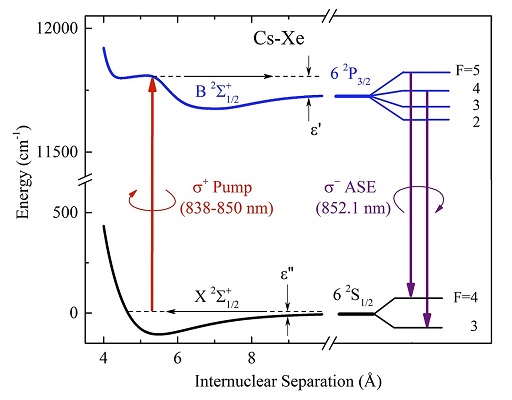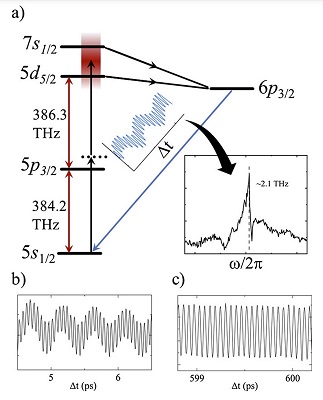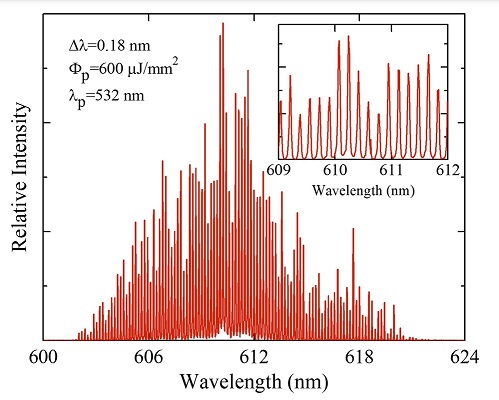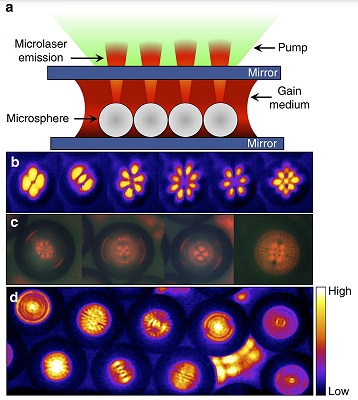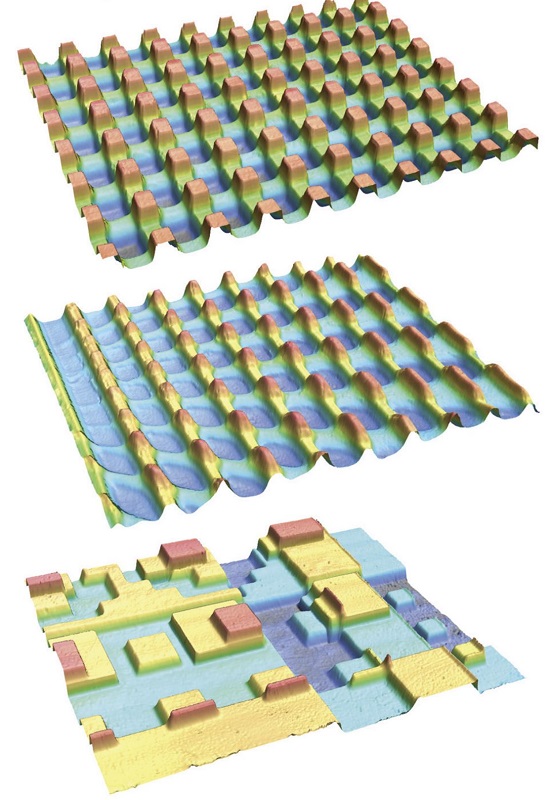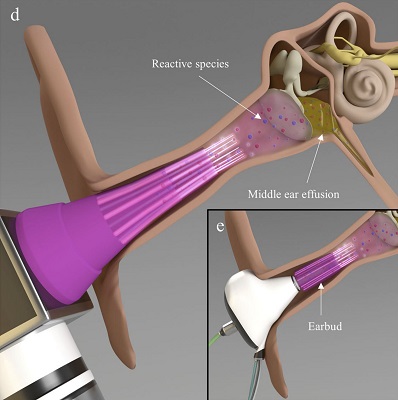Optical Spectroscopy and Lasers
The Laboratory for Optical Physics and Engineering (LOPE) has a long history of developing laser-based spectroscopic techniques and new laser light sources, most notably in the gas phase. Current research efforts are enabled by having a wide variety of laser sources available to probe the microscopic interactions of interest, including femtosecond lasers, high-energy nanosecond lasers, and wavelength-tunable sources (dye lasers and OPOs). Our recent and ongoing research topics in this area include:
Excimer spectroscopy and lasers
An exciplex (“excited complex”), more commonly referred to as excimer (“excited dimer”), is a transient two-atom molecule that only exists while in an electronic excited state.
We specifically focus on excimer formation between alkali metals and rare gases which, in addition to being a unique and useful tool for studying AMO physics, can be used to produce excimer-pumped alkali laser (XPAL) systems, as was first demonstrated in
2008.
After the alkali-rare gas molecule is formed via optical pumping, it dissociates and leaves the alkali metal in an excited state from which stimulated emission can occur on the D-line optical transitions.
Through this work, a quantum efficiency greater than one has been achieved by dual-wavelength pumping as well as the ability to
selectively excite specific hyperfine levels in alkalis by way of a circularly polarized pump beam to increase gain and laser efficiency.
Quantum beating in Rb vapor
Rubidium atoms in the vapor phase are coherently excited by a femtosecond laser pulse, inducing atomic (and molecular) coherences that result in the energy level populations oscillating in time.
This oscillation is known as quantum beating.
An identical, delayed femtosecond pulse is then introduced to probe the excited Rb atoms via resonant four-wave mixing.
The signal that results from scanning the time delay between the pulses contains frequency information that can be used to study atomic and molecular dynamics of the system.
Recent results have indicated the existence of a so-called exceptional point with respect to the mean distance between Rb atoms and provides insight into long-range (50-100 nm) interactions.
Novel laser gain media and resonators
We have considerable interest in advancing laser science for the purposes of generating new types of light sources.
In addition to the excimer lasers discussed above, LOPE has worked on fiber lasers (including the first violet/UV fiber lasers), biological lasing materials
(e.g. flavin mononucleotide and R-phycoerythrin),
and new laser resonator configurations to produce fractal laser modes or uncoupled laser arrays for low-coherence imaging.
Microplasma Technology
Since its inception, LOPE has specialized in gaseous electronics with a particular emphasis on photonics. For over two decades, we have taken special interest in microcavity plasmas, i.e., plasma devices having sub-mm dimensions. These devices can operate at atmospheric pressure and under non-equilibrium conditions, thereby generating very high electron temperatures and densities while maintaining a low gas temperature. Microplasma columns, jets, flat-panel lamps, transistors, and chemical reactors have all been developed with this technology for a variety of applications. Our current primary research topics in microplasma are:
VUV photolithography
Microplasma Xe2 lamps emitting at 172 nm (7.2 eV) are being used for developer-free photoablative lithography of bulk polymers and polymer-based photoresist films.
Single-step photolithography of polymers has been demonstrated with 350 nm lateral resolution and material removal rates up to 4 nm/s.
The lamps produce uniform illumination and can be efficiently tiled to accommodate large wafer sizes.
Microplasma-driven atomic layer deposition
High quality films can be grown from Al2O3 (and other oxides) with atomic layer deposition (ALD) by dissociating the chemical precursors in a microplasma reactor.
Near-ambient processing temperatures allow for deposition on polymer substrates that cannot withstand the high temperatures inherent in many chemical deposition methods.
This has enabled, for example, the fabrication of deep-ultraviolet photodetectors on a flexible substrate.
Reconfigurable plasma photonic crystals
Photonic crystals are structures that are designed to reflect or attenuate certain frequencies of light while allowing other frequencies to transmit.
Most photonic crystals exist in the solid phase and have optical properties that cannot be readily modified after fabrication.
Using a plasma as an integral material in a photonic crystal, however, enables the optical characteristics to be manipulated at electronic speeds by changing the power loading to the plasma.
The microplasma photonic crystals to date consist of either plasma jets or confined plasma columns in two or three dimensions.
Tunable narrowband attenuation has been demonstrated with frequencies up to ~170 GHz.
Microplasma for disinfection
The combination of high electron temperatures and near-ambient gas temperatures that are characteristic of microplasmas make them an excellent tool for many disinfection applications because free radicals that break down bacteria, fungi, etc. are readily generated while not subjecting living tissue to thermal damage.
To this end, microplasma jet arrays have been effectively applied to disinfect burn wounds and infections of the
eyes, and middle-ear.
Microplasma has also been shown to be an efficient method to generate ozone, which can be used to disinfect drinking water, for example.
